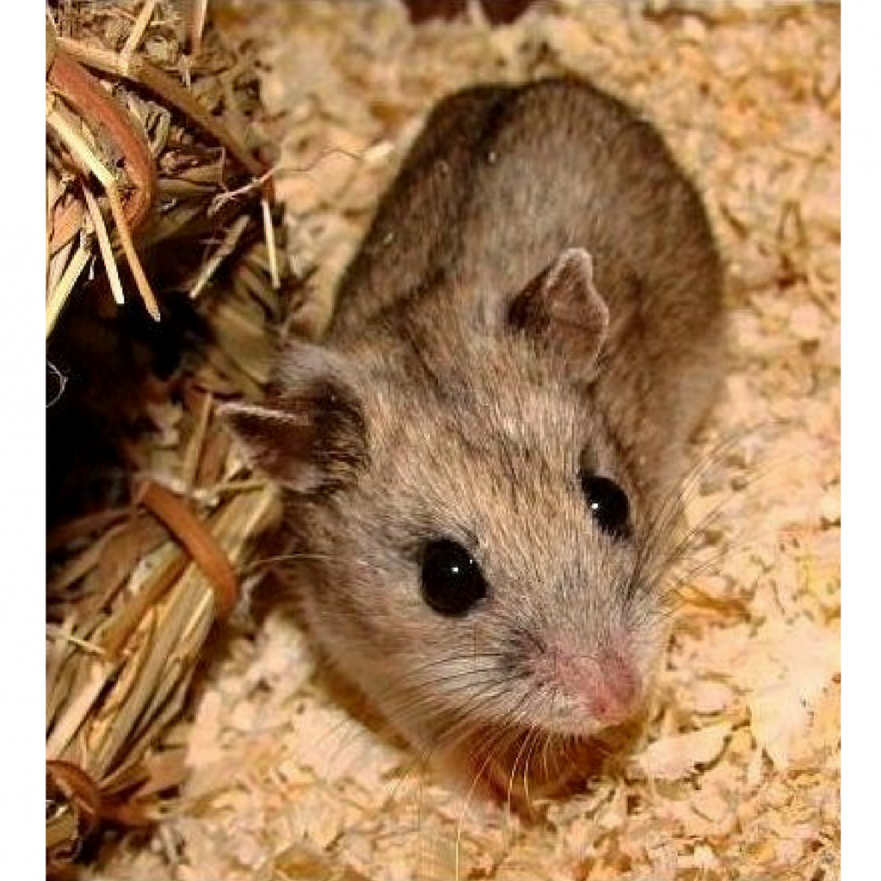The Chinese hamster (also known as the Chinese striped hamster and Chinese dwarf hamster) is one of the most popular hamsters to keep as a pet. Chinese hamsters are actually not technically dwarf hamsters, however they are often categorised as a dwarf due to their small size and similar appearance.
Caring for a Chinese dwarf hamster is relatively simple, it just takes the right knowledge! Below we’ll cover key Chinese dwarf hamster facts and everything you need to know to care for this animal at home.
The Chinese Dwarf Hamster - Appearance, Colors and Key Info
Chinese hamsters are a little less common in pet stores compared to their Russian cousins but that doesn’t mean they aren’t a great pet to care for. Chinese hamsters are rewarding pets to keep and offer a slightly different appearance to the usual pet hamster.
Scientific name
Cricetus griseus
Other names
Chinese hamster
Chinese dwarf hamster
Chinese striped hamster
Lifespan
2-3 years
Size
Around 4 inches (10-12 cm)
Chinese Dwarf Hamster Appearance And Colors
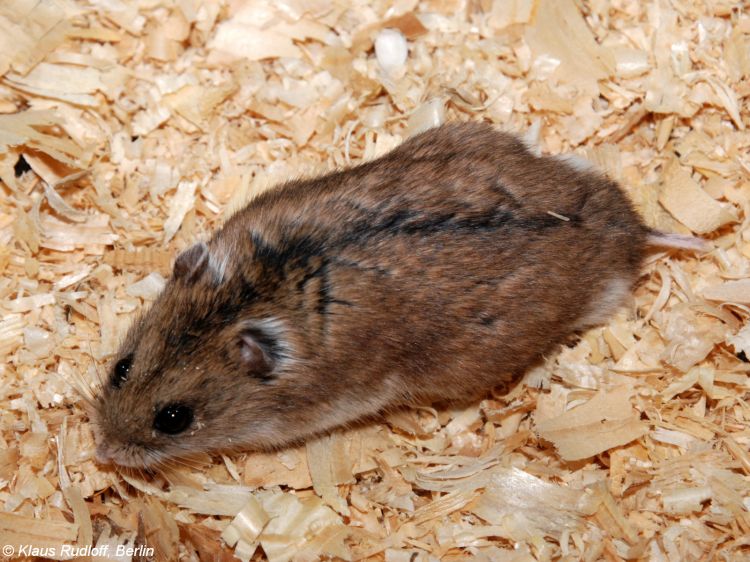
The Chinese hamster is slightly different in appearance to other hamster species. The Chinese striped hamster has a much longer and thinner body shape as well as a long tail. It’s around half the size of a Syrian hamster and slightly longer than Russian dwarf hamsters.
Some people liken the appearance of the Chinese hamster with the common rat and it’s easy to see why. While they share a similar appearance to rats (which may or may not be your thing), they are also easily tamed and have a gentle temperament. Here are the common Chinese hamster colors:
- Greyish brown with a black dorsal stripe (known as agouti)
- Greyish white with a dark dorsal stripe (more rare)
Selective breeding has led to various fur colors being brought into pet stores so you may find slight variations on the above. Here are some ways to distinguish a Chinese hamster from other hamster breeds:
- Dark brown fur
- Long and thin body shape
- Long rat-like tail
How Long Does A Chinese Dwarf Hamster Live For?
All hamsters have short lifespans ranging between 1.5-3 years. The Chinese hamster is no different and lives for 2-3 years in captivity.
That may sound like a short period of time but it actually makes the Chinese hamster a much better fit for first-time pet keepers. You have time to tame your pet, watch it grow and develop a real bond without having a 10+ year commitment as you would with animals like dogs, cats or chinchillas.
Remember that every hamster is different and lifespan can be influenced by a range of factors, including:
- Health problems
- Quality of life
- Diet and nutrition
- Amount of exercise
- Quality of pet store/breeder
- Genetics
Where Does The Chinese Striped Hamster Come From?
As their name suggests, Chinese hamsters originate from China but also from areas of Mongolia. They were originally discovered in 1900 but were not introduced into the pet market until the 1960s. Popularity for Chinese hamsters grew massively when Russian dwarf hamsters were brought into the pet market, popularising the animal.
In the wild Chinese hamsters will often live in burrows. These burrows can have multiple entrances and become quite complex as the hamster grows. This is one of the main reasons hamsters love having tubes in their cage!
Chinese hamsters will wait till night before going to the surface and then start scavenging for food. They also use the night to find bedding materials and build their burrow – hamsters can cover miles and miles of distance at night!
How To Sex A Chinese Dwarf Hamster
Chinese dwarf hamsters can be easily sexed which makes buying a same sex pair a lot easier.
Why are they so easy to sex? Well, the reality is that male Chinese hamsters have large sexual organs that aren’t too hard to spot! This may be a reason why many pet shops decide against these hamsters, they’re worried that the appearance of the Chinese dwarf won’t be what people are looking for.
Are Chinese Hamsters Good Pets?
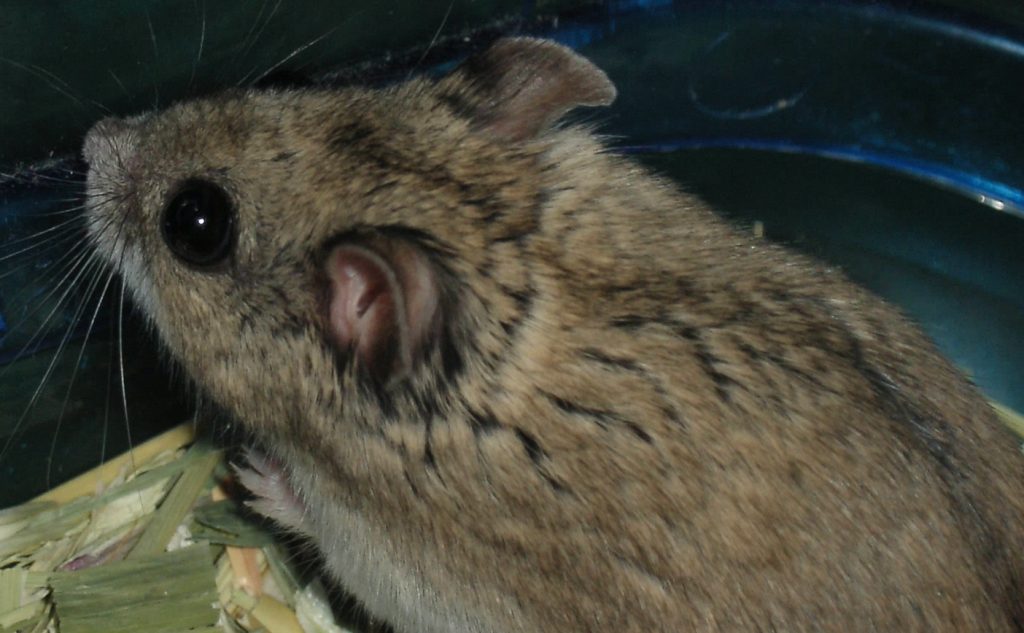
The Chinese striped hamster is a perfect small pet! All dwarf hamsters make for enjoyable pets and the Chinese hamster offers something slightly different to the more common pet store hamsters.
Chinese hamsters are usually good natured and gentle animals. Dwarf hamsters can be slightly harder to handle than Syrians simply because they’re smaller and much faster but practice always makes perfect. Some breeders actually consider Chinese hamsters to be the easiest dwarf hamster to tame.
It’s important to remember that Chinese hamsters are nocturnal animals which means they sleep during the day and become active at night. That shouldn’t be a problem, as long as you’re happy to spend time with your pet in the evenings after work/school. Try not to wake your hamster during the day too often to avoid grumpiness!
Restricted Ownership Of Chinese Hamsters
Unlike other popular hamster breeds, there are some US states where Chinese hamster ownership is actually restricted or even illegal. In most cases, you have to apply for a permit to keep this animal and it may be hard getting one, most permits are only handed to research studies or exhibitors.
Here are the states where these restrictions are currently in place:
- California
- Hawaii
- New Jersey
- Oregon
Where To Get A Chinese Striped Hamster
Pet stores – Always do your research and ensure you use a reputable pet store before buying your hamster. A good pet store will keep their hamsters healthy, well fed and exercised. Always take a look at the condition of the hamsters in the store, the cleanliness of their cages and any signs of illness to ensure everything goes smoothly. There are some great pet stores out there!
Breeders – Specialist Chinese hamster breeders may be required in areas where pet stores do not stock this species. Usually breeders are experts in their field and should be able to provide some great advice for keeping your new pet healthy.
Animal shelters – A slightly riskier option, animal shelters care for animals that have been abandoned or mistreated. They often have hamsters up for adoption but some will have health issues or be very shy due to previous owners. That being said, shelters can offer excellent advice and giving a mistreated animal a new, safe home can be extremely rewarding.
Chinese Hamster Minimum Cage Size
Always try to purchase the largest cage you can afford for your hamster. The more space for these animals to run and explore, the better! The minimum cage size for a Chinese dwarf hamster is considered to be 24 inches long and 12 inches wide. This is basically the equivalent of a 20-gallon aquarium.
What’s The Best Cage For A Chinese Hamster?
Unlike Syrian hamsters, Chinese hamsters can be kept in pairs or groups and how many you plan to keep should influence which cage you purchase. There are three main types of hamster cages, which are:
- Wire-top cages (the classic)
- Glass aquariums
- Small animal habitats
Each type of cage has its own benefits and all can work well. Remember that Chinese hamsters are small and thinner than other hamster species which means they can sometimes squeeze between the metal wires on a cage. Be sure to pick a cage that has very small spacing between wires – you don’t want to be running after a Chinese hamster all night (trust us)!
We’ve listed our favourite hamster cages here but there are a tonne of different options out there. Here are some of the best cages for a Chinese hamster:
The Savic Hamster Heaven - Our Favourite Hamster Cage
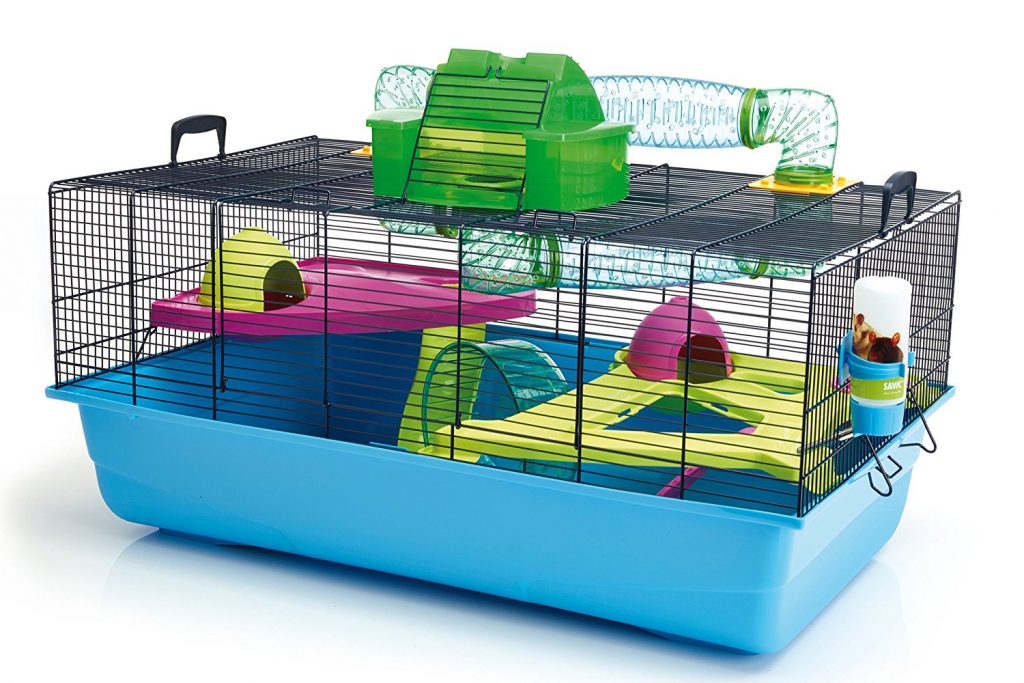
This is probably the best hamster cage you can buy today. It provides plenty of room for your hamster to explore and is capable of holding a small group of Robos. Lots of accessories are included with the set while being easy to assemble and clean – click here for more details on the Savic cage.
20 Gallon Glass Aquarium - A Blank Canvas

A cheaper option is the classic 20 gallon aquarium. This is a blank canvas and allows you to create any hamster cage design you wish. No metal bars mean your hamster isn’t going to find a way out of this anytime soon!
Ferplast Hamster Cage - A Great All-Rounder
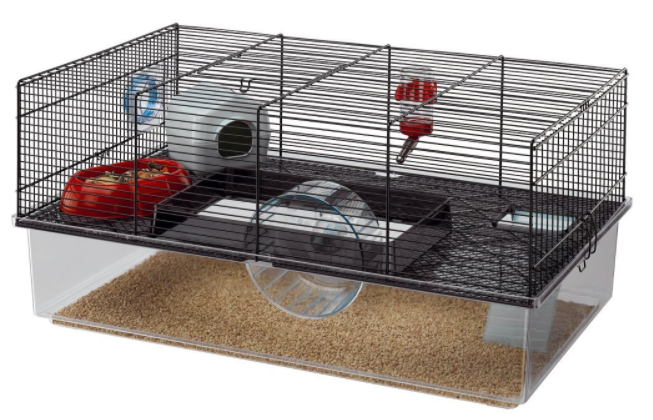
This Ferplast hamster home is a great all-rounder and should be a perfect solution for the majority of hamster owners. The main benefit of this cage is its bottom section which promotes natural behaviours in your pet, allowing them to burrow and bury their favourite foods!
How To Take Care Of A Chinese Hamster
Keeping a Chinese hamster healthy isn’t too difficult. If you provide your hamster with good food, water, exercise and a large amount of living space then you should be fine! Here are some of the other things you’ll want to consider when keeping a Chinese dwarf hamster.
Hamster toys are very important, you need to keep your hamster active and playful in their new home! Toys are a form of enrichment and they really help hamsters live a long, healthy life. A good hamster wheel should be a priority as hamsters absolutely love to run. Chinese hamsters are also incredibly good climbers (thanks to their long tail) so climbing toys are a must.
Unfortunately, dwarf hamsters are prone to diabetes and feeding an unhealthy diet can lead to problems. Always choose a healthy hamster food mix from a reputable brand and supplement the diet with fresh fruits, veg and healthy treats. You can even feed Chinese hamsters mealworms if you’re not too squeamish!
A food bowl will let your hamster know it has a regular food source but be careful of aggression between hamsters at meal time. Consider purchasing two bowls if keeping multiple hamsters and always ensure you purchase a cage with plenty of running space for however many hamsters you keep.
You’ll need a high quality substrate and bedding material for the bottom of your cage. This will absorb any mess and needs replacing weekly.
How To Clean Your Hamster Cage
Aim to clean your cage once every week with a pet-safe disinfectant spray. This will maintain a clean, bacteria-free environment for your pet and keep your hamster very happy indeed! We have a detailed guide on hamster cleaning but here are the basic steps:
- Place the hamster into a secure exercise ball
- Remove and bin dirty sawdust, bedding and old food
- Remove toys and cage accessories
- Use an animal-safe disinfectant to clean all surfaces
- Scrub, rinse and dry your cage
- Rebuild the cage, putting tubes and toys back together
- Replace the old bedding and substrate
- Place the hamster back into the cage and give the exercise ball a quick clean
How much does it cost to look after a Chinese hamster?
The biggest cost of keeping a hamster is buying all the equipment needed to set up your cage. Once that’s finished you’ll only need to be purchasing food, bedding, treats and toys which doesn’t add up to much. In truth, hamsters are one of the cheapest pets you could own – even cheaper than fish!
Hamster cage – $30
Hamster wheel – $10
Toys – $20
Hamster house (hiding area) – $5
Substrate/bedding – $15
Food bowl and water dispenser – $10
Food mix – $10
Chinese hamster – $15
Approx. cost = $115
Chinese Dwarf Hamster Behaviour and Temperament
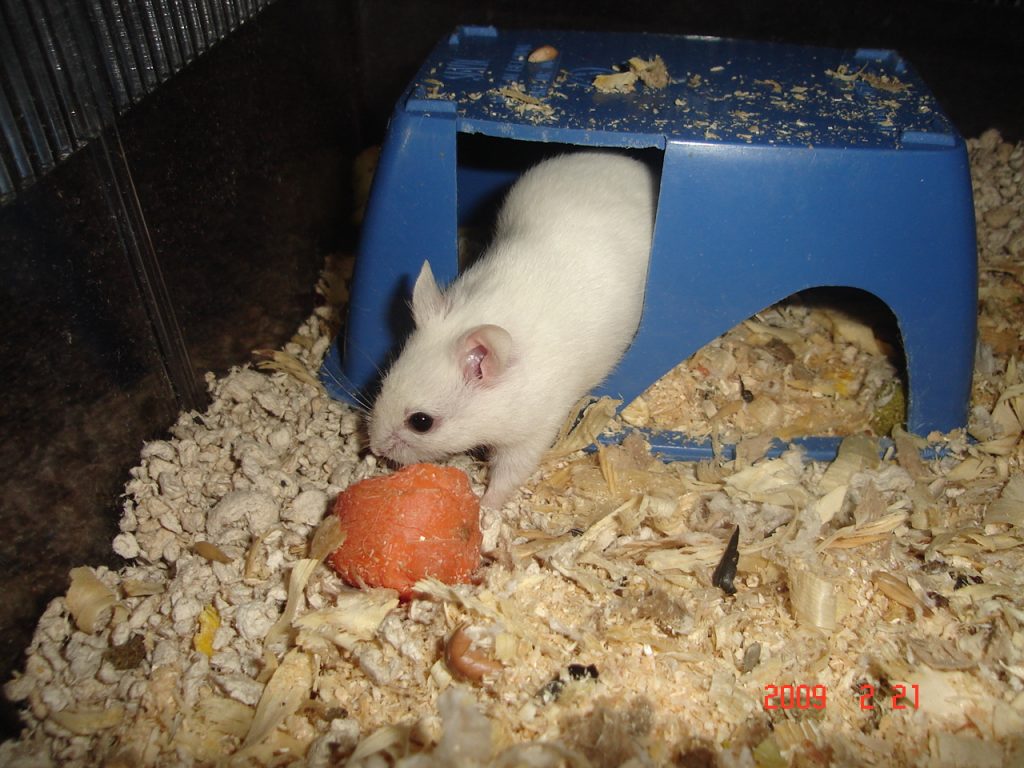
Just like the Roborovski hamster, Chinese hamsters are very playful and active. Consider purchasing a hamster ball or playpen to allow your pet to explore and expand all their energy.
Chinese hamsters generally have a friendly temperament and can be kept together in the same cage. Providing lots of toys and exercise is a must otherwise the hamster may become stressed, less friendly and start chewing everything in their cage.
All dwarf hamsters are quite fragile and must be handled with care. You can develop a great bond with your pet through regular handling, slowly building trust with your new pet.
Are Chinese Hamsters Safe For Children?
Chinese hamsters are the perfect first pet for children! The only real issue is that children must be careful when handling their hamster as they have quite fragile bodies and cannot be dropped from any real height.
Dwarf hamsters tend to be more playful and more active than Syrians which can make them more fun to watch. Children always enjoy watching a dwarf hamster race across the floor in a hamster ball, just remember to always supervise them during handling time.
Do Chinese Dwarf Hamsters Bite?
All hamsters are capable of inflicting a bite but only when threatened. Take it slow when building a bond with your pet and learn to understand your hamster’s body language. The #1 cause of bites is attempting to pick up your hamster from above. This imitates a predator’s behaviour so always scoop from below to keep your pet comfortable.
Best Toys For A Chinese Dwarf Hamster (Enrichment Guide)
Enrichment is absolutely essential when it comes to Chinese hamster care. They are extremely high-energy animals with lots of curiosity. They are also great climbers and really appreciate some form of climbing frame in their cage. Tubes, wheels, burrowing toys and chew toys are all excellent options.
Best Hamster Wheel For A Chinese Hamster
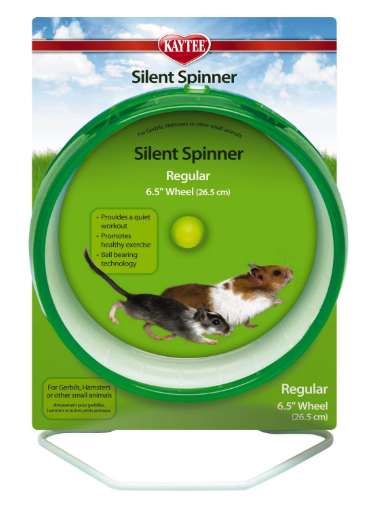
A good hamster wheel is an absolute must for your cage. Roborovskis are incredibly active and you’ll probably notice that they’re always on their wheel in the pet store!
That’s why Kaytee silent spinner is the perfect option. At the time of writing, it’s available for only $12.99 (see latest price here) and has the added bonus of being silent. You don’t want to be waking up every night to an annoying squeaking sound coming from your hamster cage – trust me!
Always go for a silent hamster wheel, it will be very beneficial for the long run. Most cages come equipped with a standard wheel that squeaks non-stop when in use.
Climbing Frame Hamster Toy

A good climbing frame for your hamster can improve quality of life and provide a new challenge for your pet. The natural living tunnel toy encourages natural behaviours in your pet while, providing an all-new activity for your pet. It’s really fun watching a dwarf hamster navigate the toy, exploring all the different areas. Click here for latest price.
Sturdy Hamster Exercise Ball
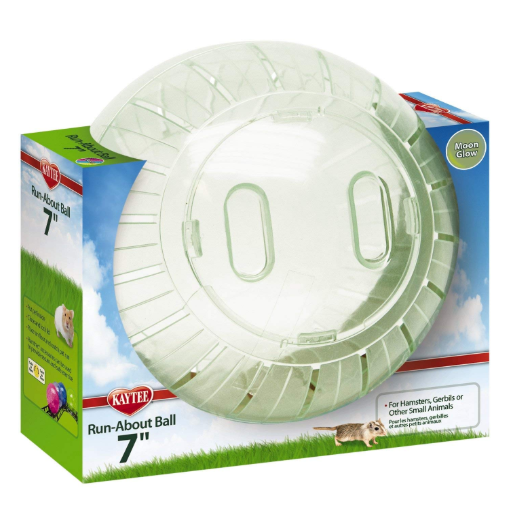
The Kaytee Run-About hamster ball is another must-buy for your pet. This allows you to keep a Campbell’s hamster occupied while you carry out weekly cage cleaning duties. Some hamster balls easily break open when in use, resulting in an escaped hamster to look for! That’s why it’s better to go for quality in this department. Click here to check the latest price.
Hamster balls are also perfect for kids. You can allow children to enjoy and interact with their dwarf hamster without the need for handling.
Give Your Hamster Some Time Outside The Cage
Don’t be afraid to let your hamster outside the cage after you’re a little more comfortable with each other. A small room or a playpen can be used to really let your hamster stretch its legs and explore some new surroundings. This is also a great time to try some handling!
How To Handle And Tame A Chinese Dwarf Hamster
You can tame any hamster with regular handling sessions. It takes a little patience but once you’ve tamed your pet, you’ll be able to pick him/her up whenever you’d like! This definitely makes life easier, particularly when it comes to cleaning. It’s also a rewarding feeling to build trust between you and your pet.
To tame your dwarf hamster, here’s the best strategy:
- Give your hamster some space for a few days after purchasing
- Softly talk to your hamster and offer it treats, this will get it used to your scent and voice
- Carefully stroke your hamster when possible and offer treats as a reward
- After some time, start putting your hand flat on the bottom of the cage and allow your hamster to climb on and explore
- When you think you’re ready, carefully scoop your hamster from underneath and handle your pet
- Slowly increase height over the next few days to build trust
Chinese Hamster Feeding Guide
Dwarf hamsters will eat a variety of nuts, grains, seeds, vegetables and insects in the wild. It’s best to try and replicate this diet as best as possible in captivity, hamsters also love fresh fruit but it’s best to feed this in moderation.
You’ll also want to feed your pet a high quality hamster mix that contains essential nutrients and vitamins. Always do your research before buying hamster food and be sure to pick up some healthy hamster treats to reward your pet for good behaviour. Listed below are some of the best food mixes available.
Here are some common foods that Chinese hamsters cannot eat and shouldn’t be fed:
- Chocolate and candy (high sugar)
- Any kind of junk food (high sugar)
- Potatoes
- Onions
- Garlic (acidic)
- Hot Peppers (anything spicy should be avoided)
- Almonds (high fat)
- Citrus fruits (acidic)
- Rhubarb
- Avocado (poisonous)
Avoid those foods and provide daily fresh water to keep your hamster healthy.
Tiny Friends Farm Hazel Hamster Mix

The Tiny Friends food mix is perfect for a picky dwarf hamster. It’s a great tasting mix of seeds, mealworms and other healthy treats. This food mix can also be used for Syrians, making it a much more versatile option for pet keepers. Click here to see the latest price of this food mix.
Key Benefits:
- A great tasting food mix
- The best food mix for fussy hamsters
- Nutritionally balanced
- Suitable for all hamster breeds
- Added vitamins and includes mealworms
- Promotes natural foraging
How Much Should You Feed A Chinese Hamster?
Dwarf hamsters need around one tablespoon of food mix per day (per hamster). You can also supplement fresh fruit, insects and packaged treats on top of this to keep energy levels high and reward good behaviour. Just remember to feed treats sparingly as Chinese hamsters are prone to diabetes.
Common Chinese Hamster Health Issues
Wet tail – This is a very common illness in hamsters and all rodents kept in captivity. A hamster suffering from wet tail will often have a reduced appetite, reduced energy and diarrhea. This is a highly contagious illness so always isolate a poorly hamster if you believe wet tail to be the cause.
Respiratory problems – Breathing issues are common in hamsters, particularly when an inadequate bedding material is being used in the cage (such as fine sawdust). Common symptoms are sneezing, redness around the nose and reduced energy.
Diabetes – All dwarf hamsters are prone to diabetes and with a balanced diet, this can be easily avoided. Feed treats sparingly and be careful with high-sugar foods.
Sickness – Chinese hamsters can actually catch sickness bugs from humans so it’s best to avoid contact if you’re feeling under the weather. Hair loss, weight loss, redness and diarrhoea are all common symptoms.
Hamster Teeth Never Stop Growing!
Hamsters need plenty of chew toys to grind down their teeth as they never stop growing. Chinese hamsters will happily chew anything they can get their hands on so be sure to provide a toy to satisfy this need!
Can Chinese Dwarf Hamsters Live Together?
Chinese hamsters enjoy company and can be kept safely in same sex pairs or groups. Some breeders argue that females are more aggressive than males and shouldn’t be kept together while other hamster-keepers don’t believe this to be true.
Every hamster has a different personality and it’s important to be careful when introducing two hamsters together. Always have a spare cage handy just in case. Purchasing multiple hamsters from the same litter is a must to avoid aggression as fights are much more likely between non-related hamsters.
Chinese Dwarf Hamsters Fighting?
The best way to avoid arguments in your group is to reduce territorial behaviour by purchasing a larger cage. You can also provide your pets with multiple food bowls, hamster wheels and sleeping areas to avoid squabbling over food or a specific toy.
Chinese hamsters can often be seen play-fighting and squeaking (particularly females). Social grooming may also sometimes be confused with fighting. If you suspect fighting, monitor closely and separate hamsters as soon as you’re sure. If you ever notice an injury, it’s time to separate.
How To Breed A Chinese Hamster
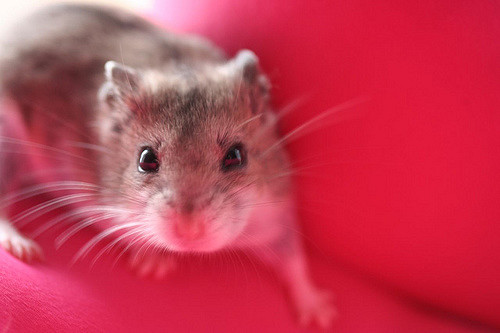
Chinese hamsters become sexually mature at only 5 weeks old and can breed at anytime beyond that age. While having some hamster pups may seem like a good idea, it’s better left to the experts as there are lots of precautions that need to be taken. Here are a few:
- Dwarf hamsters can sometimes eat their young so lose monitoring is needed
- A Chinese hamster will often have 3-7 litters and it can be hard to find a home for all the pups
If you do feel you’re ready to breed Chinese hamsters, make sure you’re well prepared and have space for the pups. A female Chinese hamster will remain pregnant for 18-21 days and can become extremely aggressive during that time. The male should always be removed during this process.
It can actually be hard to tell if a Chinese hamster is pregnant as they only bulk out around 3-5 days before giving birth! New pups are born deaf, blind and hairless but they quickly grow into full-size adults.
Female pups are able to stay with their mom but males should be removed from the litter at 4 weeks. When it comes to hamster breeding, here are some essential steps you’ll need to take:
- Add some calories to your hamster’s diet by upping calories and protein
- Keep the cage clean and remove any objects or toys that could injure a baby hamster
- It’s argued whether a mother will reject a pup that has a human scent, but it’s best to leave the cage be for the last couple of days before birth just in case
- The birth process usually takes around 2 hours with new pups being born at 20-30 minute intervals
- Try not to disturb the cage for up to 2 weeks after birth
- Keep water and food topped up, it’s usually best to provide lots of supplies just before birth
- Separate the hamsters at the age of 4-5 weeks
Summary
So that’s everything you need to successfully look after a Chinese dwarf hamster! Hopefully this guide has helped you provide a healthier, happier and more educated home for your new pets. If you’re interested in other elements of hamster care, do browse the DwarfHamsterGuide blog for all the information you could ever need.
Here are some other useful hamster care guides:
